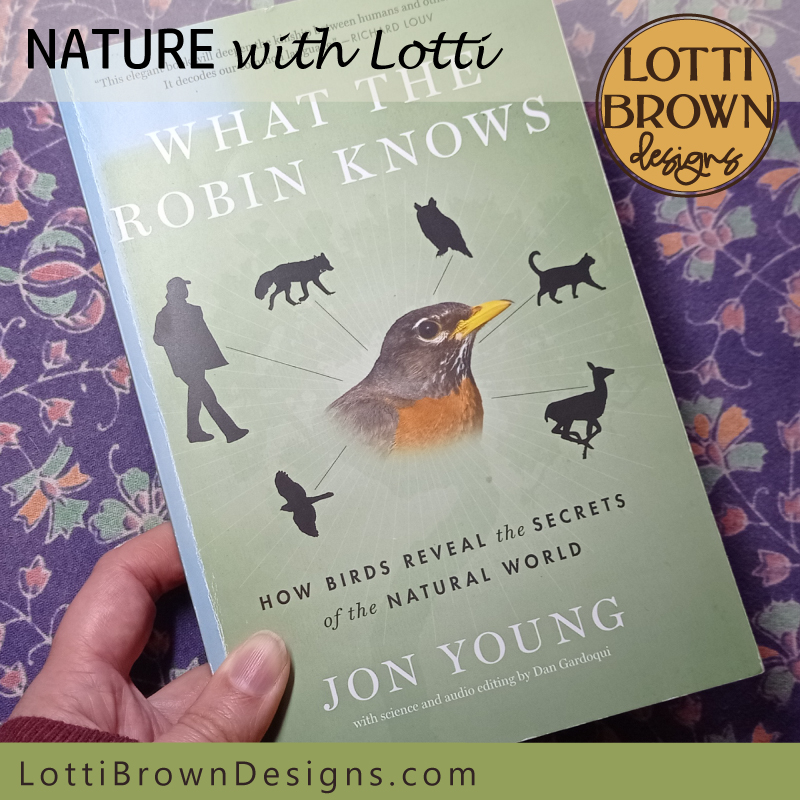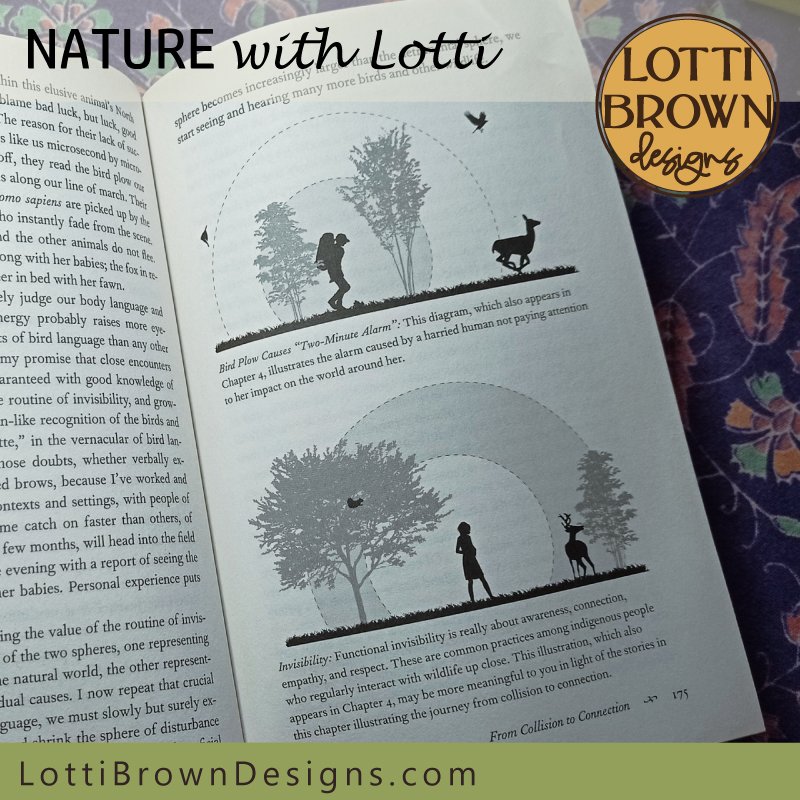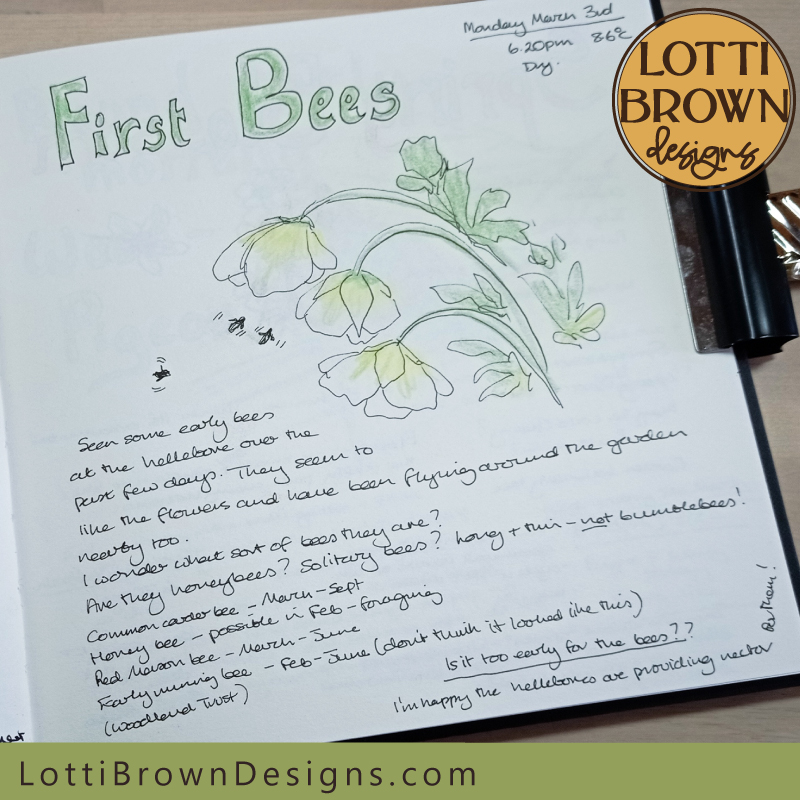SPRING 2025 - I've just completed a WEBSITE REVAMP! Everything is still here but may be in a slightly different place where than you left it and there's also lots of new sections, so if you're having trouble finding something in particular or you spot something that's not working as it should, please do get in touch and I'll do my best to help!

Book for Bird Lovers
'What the Robin Knows'
- Home
- Nature Journaling
- What the Robin Knows Book
Fantastic book for bird lovers who want to understand the language of birds - 'What the Robin Knows' by Jon Young.
'What the Robin Knows' was recommended to me by a fellow nature journaler so I thought I’d give it a go…
 'What the Robin Knows' by Jon Young
'What the Robin Knows' by Jon Young
Such an interesting book for bird lovers!
First off, this book is written about American birds, so for a British person like me, the American Robin is not the same robin I’m familiar with. The bird species written about in depth in most of the book are also American species that a British reader likely doesn’t recognize. However, for this book, and for what this book is about, this doesn’t really matter.
This is not a typical bird identification book, and nor is it particularly about the robin, specifically. It is a really interesting book for bird lovers and nature lovers though!
The message of the book is not about the precise behaviour of such-and-such specific species (although specific behavioural examples are included), but it’s more of an introduction to or explanation of ‘bird language’ – a language common to all birds – what it means for us and how we can start to understand it.
It’s also an invitation to examine our place in the world and a reminder of how we, as humans, have largely lost our connection with the natural world – and how bird language can help us reconnect with nature.
This message of connecting with nature is a topic dear to my heart, which you’ll know if you’ve explored more of my website – so I definitely feel like this is a worthwhile read.
Our Instinctive Lives?
The author, Jon Young, is an experienced tracker and has been mentored since childhood in the Native American traditions of tracking and understanding the natural world. In the book, he writes how modern natural sciences and research are really still trying to catch up with native indigenous knowledge that understands so much about the natural world on what seems to be an instinctive level.
Young argues that our instinctive lives are lived in nature, aware and connected with the natural world. We are losing this in our modern lives. But however much we might find that learning bird language or connecting with nature feels outside of our comfort zone, this is potentially something we still need. He cites a 2009 study showing that simply looking at photos of the natural world increases empathy, sharing, and connectedness. How much more effective must real life nature be..?
Bird language is a whole lot more than just understanding what the birds are communicating about. Understanding bird language helps us to understand what’s happening in the natural environment, what animals are where, and how they’re behaving or feeling – and it also allows us to think about our own role in this natural environment. Where do we fit in? What energy do we bring to the natural world?

Understanding Bird Calls
Young introduces us to five different types of bird calls. The four baseline calls include songs, companion calls, territorial aggression and adolescent begging – and the fifth type is alarm calls which denote some kind of disruption in the natural habitat.
He takes us through the daily fluctuations of bird calls - including the dawn chorus, midday quiet and sunset singing, amongst others – and how a bird’s instinctive focus is on conserving energy so that when you hear bird language, you know it has an important purpose.
Alarm calls show the bird feeling threatened in some way – usually predators or human disturbance. These alarm calls may be loud vocalisations but you can also track disturbance by how birds move or scatter, dive or defend. Experienced listeners to bird language, like Jon Young, can actually predict which predator is likely to have created a specific disturbance.
Learning Bird Language
The best way of learning bird language is by observing birds – and especially your local birds, perhaps in your own back garden. Young recommends coming back frequently to your same ‘sit spot’ (something we nature journalers also do – I talk about this in my nature journaling course) to get to know ‘your’ birds and to start to understand their language.
At the same time as you get to know ‘your’ birds, your birds will get to know you. They’ll learn your body language and get to know if you’re threatening or safe – and once they understand you’re safe, you’ll be able to see and hear more of them.
Throughout the book, and in a special appendix at the end, Young shares specific steps to how we can become effective students of bird language. This is not so much about learning specific calls or bird body language, and more about you, yourself, becoming more connected to nature and learning to observe with awareness.
Young shares how we can train our senses for greater awareness of the natural community we (mostly unwittingly) form a part of – owl vision, deer hearing, racoon touch, fox walking – and how we can reflect on our own personal body energy and how that sends huge signals to the birds and other animals about our state of mind and level of threat.
We can connect more with birds, animals, and the natural world with ‘honoring routines’ thinking about how we can approach nature more respectfully.
Curious About Birds..?
 Diagrams like this feature in several sections of the book
Diagrams like this feature in several sections of the bookThis is such a fascinating book for bird lovers and contains a lot of information that would be invaluable to anyone keen to become a student of bird language, or even just the curious bird lover who enjoys watching birds in their own garden but has ever wondered why birds behave the way they do.
There are many personal anecdotes in the book to explain points and a lengthy section explaining the many different ways that birds can physically respond to disturbance or ‘alarm’ with plenty of useful diagrams.
The book also contains sound files to illustrate the bird calls in each section – you will need to go online to find these – all are listed in Appendix B at the end of the book, and you can also find them on BirdLanguage.com.
Although many of the American species the author talked about were a mystery to me (in Britain), this did not really hamper my enjoyment of the book as I could quite easily recognize similar behaviour in the birds I see regularly in my own garden and local environs. Since in order to learn bird language yourself, you’ll need to sit with the birds and start to understand ‘your’ birds as your teachers to bird language, the author’s writing about American species which I’m not familiar with did not feel like it diminished the overall lessons in any way.
The whole point is that bird language does have this element of universality in it – other species of birds and other animals can understand bird language and so can we if we try to cultivate our personal connection to nature and become more aware of what’s actually happening all around us in the natural world.
It’s certainly opened my eyes (and ears) to some things I can look and listen out for in bird world in my own garden and my own street, to learn more about the birds I see every day (as I do love to watch the birds in my little garden.)
Realistically, I probably won’t become an expert bird tracker any time soon, but this book will definitely help me to deepen my understanding of birds, enjoy watching and listening to them in my garden, and will help me feel more connected to nature, which I always say is a great way of boosting your well-being to feel happier, more relaxed, and more re-energised, too.
If you're interested in this interesting and informative book for bird lovers, you can find out more at BirdLanguage.com.

Where to go next...
If you'd like to explore more books for nature lovers, see my recommendations here...
If you'd like to start nature journaling, find out more here...
If you love birds, you might like to see my bird artworks here...
Want to keep in touch?
Sign up below for my free email newsletter...
My newsletter is usually sent out once a month (at the end of one month or the start of the following month) and you can unsubscribe any time...
Sign up below...!
Recent Articles
-
Sunflower Art Prints
Mar 31, 25 07:17 AM
Sunflower art prints in rainbow colours - vibrant floral art, framed art prints, fabrics, wallpapers, homewares, accessories... -
March Nature Journal Pages
Mar 28, 25 06:05 AM
Explore my March nature journal pages with me - feeling wintery but some signs of Spring. Get inspired by a real-life nature journal... -
Easter Bunny SVG Paper Decoration
Mar 24, 25 06:35 AM
Easter bunny SVG template to make a pretty paper decoration for Easter with your Cricut or similar cutting machine...
Follow me:
Share this page:




